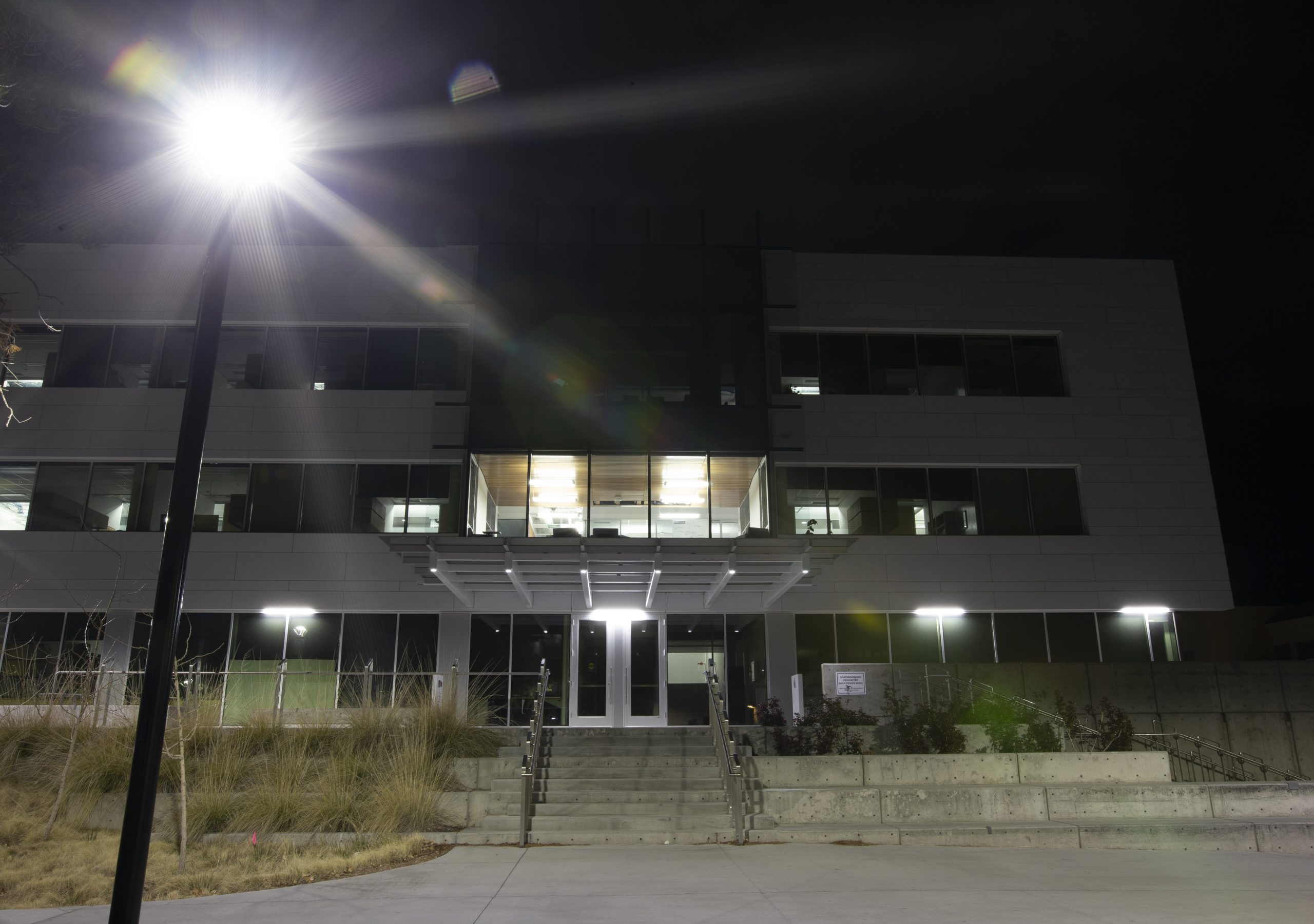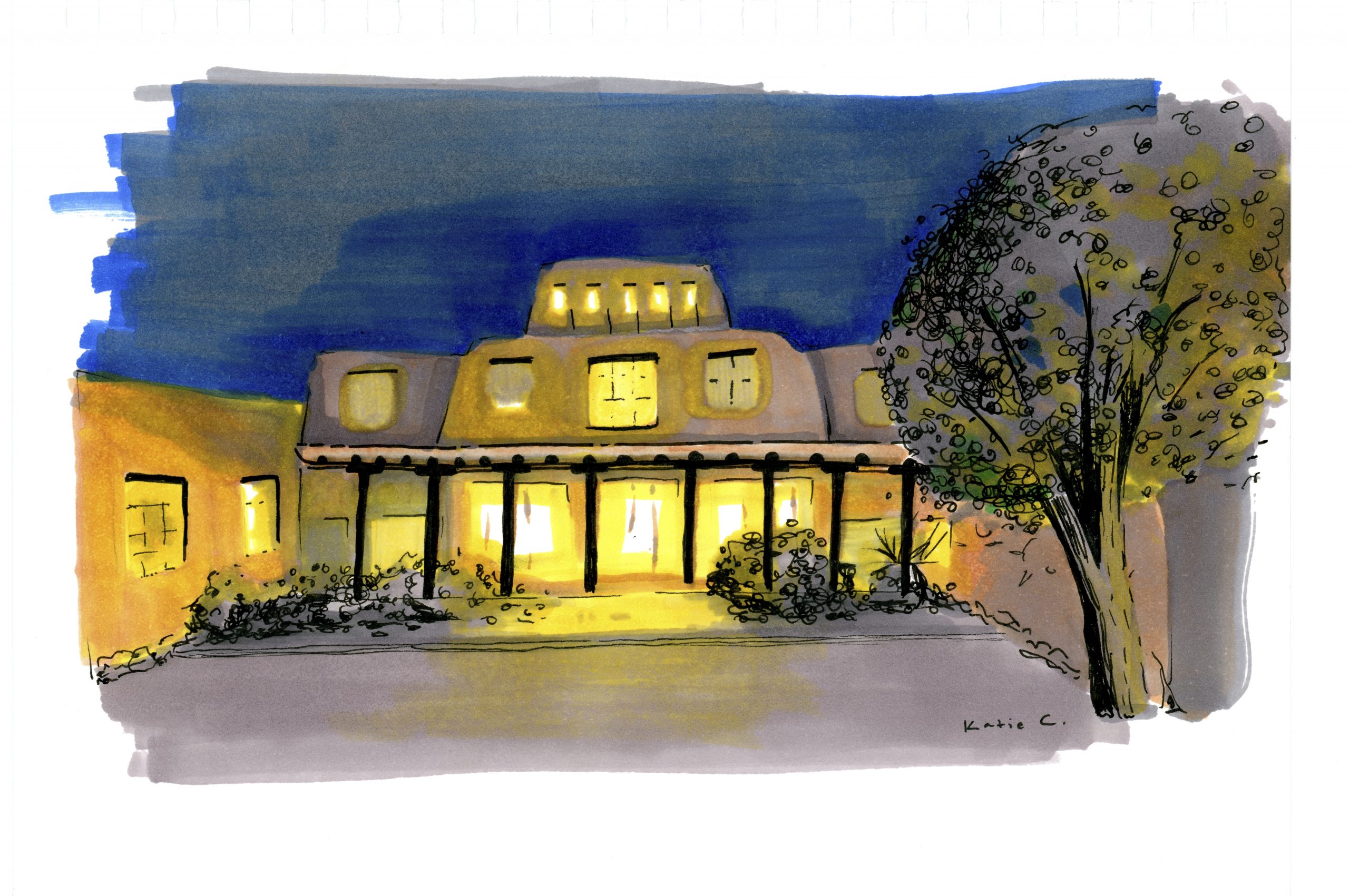As part of our Curious UNM project, our reporters are seeking questions from the UNM community about the university. These questions can look at any aspect of life on campus, from historical moments to current events. This story by Bryce Dix looks at the question of “What’s UNM’s environmental impact?”
Bryce Dix / New Mexico News Port
With nearly no one on campus right now because of the COVID-19 pandemic, UNM is using less energy and saving money on electric bills – but the decrease might not be as dramatic as you think.
Records show that past breaks only saw a decrease of 13.4 and 26 percent in energy usage for Humanities and George Pearl Hall, while others like Woodward Hall used more energy over the winter break on an hourly basis than it did when classes were in session. In fact, Humanities and Woodward Hall used more energy overnight during breaks than in-session nights.
“We have been scheduling buildings to stay in unoccupied mode during the stay-at-home order, Matthew Cherin, Vice President of Lobo Energy said. “We never shut-off a building completely, but we do raise the cooling setpoints and lower the heating setpoints so that the air never comes on, unless there is an extreme temperature change.
Lobo Energy is a non-profit corporation tasked by UNM to reduce unnecessary energy usage in campus buildings. Cherrin said they have an automatic system for when classes are in session that controls when lights turn on and off for classes and work hours with the goal of saving energy. The same goes for the heating and cooling of buildings so that occupants won’t be disturbed.
Using a system like this has proven integral to saving the university a lot of money and energy. In just this year, Lobo Energy avoided close to 7 million dollars in energy costs.
However, this system doesn’t stop students from wandering into buildings to study and leaving with the lights still on, or when someone decides they want to turn the thermostat up a tiny bit.
The New Mexico News Port wanted to take a look at the hourly power usage of certain buildings during times they aren’t being used; such as winter break or the nighttime and compare that to times when these buildings are in use. So we chose three buildings that reflected different characteristics of energy usage: George Pearl Hall, Humanities, and Woodward Hall.
As this data shows, even while students are not on campus there is significant energy usage – and in some cases, more.
Lobo Energy says there can be many reasons for high energy usage. There are “problem child” buildings that have a hard time controlling temperatures or the weather could vary and cause a building to drastically heat or cool in response.
Currently, UNM has its own power plant-like system that spans across the main campus. It generates its own electricity and steam to power and heat buildings by burning natural gas. According to Lobo Energy, 80-85 percent of campus is connected to this system, while the remaining buildings use other utility services for their energy and heating.
Bruce Milne directs the Sustainability program at the University of New Mexico. He said that more needs to be done to reduce energy waste, and his students drafted a plan to do exactly that over 10 years ago.
“The plan was very holistic in approach,” Milne said. It began with the end in mind. So, we decided that by the year 2030, we should have reduced our carbon emissions by 80 percent.”
The draft included some alternatives for energy use, such as power purchase agreements to buy clean energy from a provider off campus or even a “green fund” that would invest in solar/wind projects that would, over time, pay for themselves and fund other energy projects.
But there’s a problem.
Since the drafting of the plan, the university has not been forthcoming in how much carbon it emits, according to Milne. So, he and his students distributed a petition and wrote a letter to UNM’s president Garnett Stokes requesting this data.
They received no response.
In reaction to the university’s failure to address the issue, in the Fall of 2019, 150 students held a campus-wide climate strike. President Stokes’ representative addressed community concerns and finally agreed to release campus carbon data.
It’s been almost half a year since the climate strike has passed and still no information has been released.
But, there might be an idea of how much carbon UNM is actually emitting by looking at the data gathered by the New Mexico News Port.
The numbers show that the university is slightly curbing emissions and energy use for campus buildings, however there are no significant drops for times when energy conservation would make sense – like the night time or spring break. It’s clear that the university has more ground to cover before carbon emissions are reduced to the standards of the climate action plan.

For now, the centralized energy system run by Lobo Energy is one of the few things helping to reduce carbon emissions from UNM. But, Milne says there are more immediate ways to diagnose and treat the “epidemic” of energy waste.
“If there’s nobody in a room and the lights are on, I would say that room is infected with energy waste,” Milne said. “But if some good person comes along and sees that these lights are on and turns them off – it’s now a recovered room that is no longer infected.”
Milne said that it would be easy and cost effective to install motion sensors in every room to diagnose power use, or the university could create jobs by hiring people to go around at night to turn lights off.
The UNM Police Department goes around on nightly patrols to lock buildings on campus. Rosemary Melendrez is with the department, she said they try to turn off as many lights as possible, but don’t have the resources for officers to go room by room to check.
With tears in his eyes, Milne said conserving energy and reducing our carbon footprint is not just a responsibility for UNM, but for everybody, no matter their age, gender, or geography.
“We are all in the same boat,” Milne said. “It’s not a privileged group that gets to avoid the consequences of climate change by moving to somewhere like New Zealand – which some are doing. We have a lot to learn as people, and this could be an opportunity for that.”
Bryce Dix is the senior editor for the New Mexico News Port. He can be contacted on Twitter @brycemdix or at nmnewsport@gmail.com.
